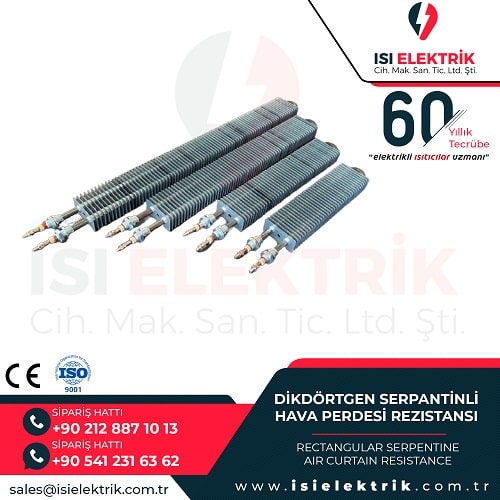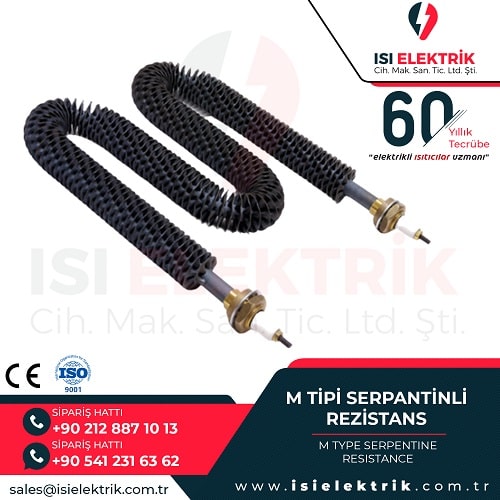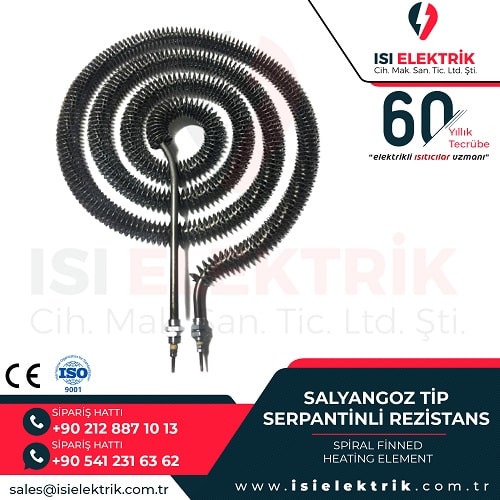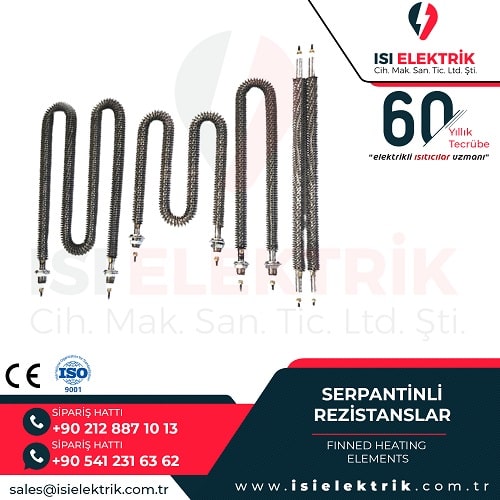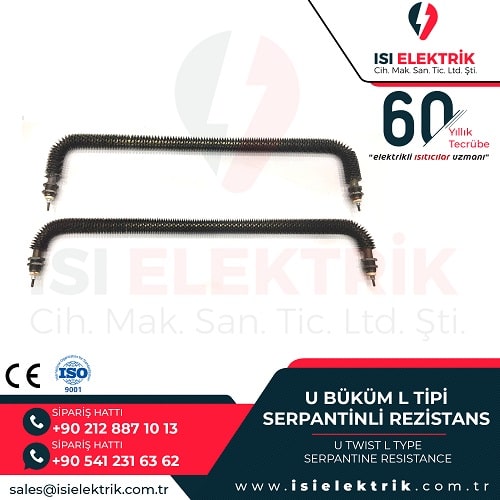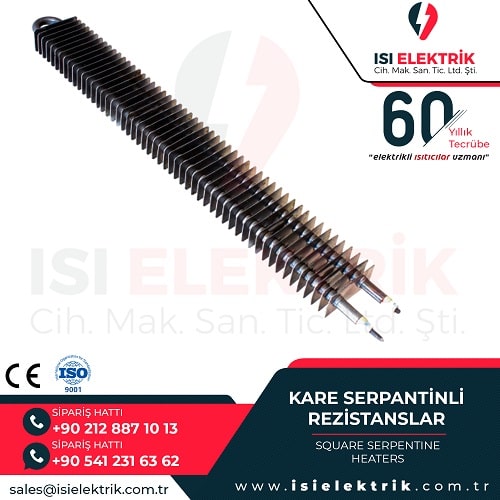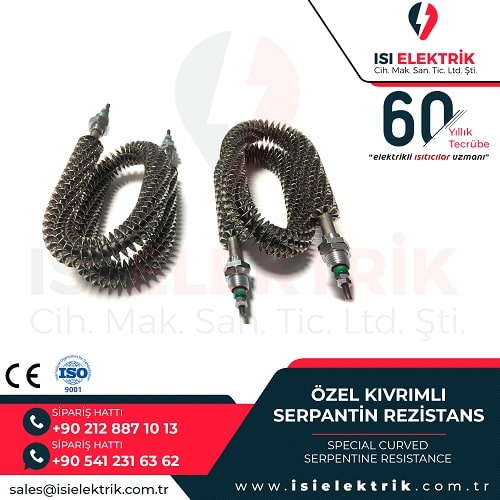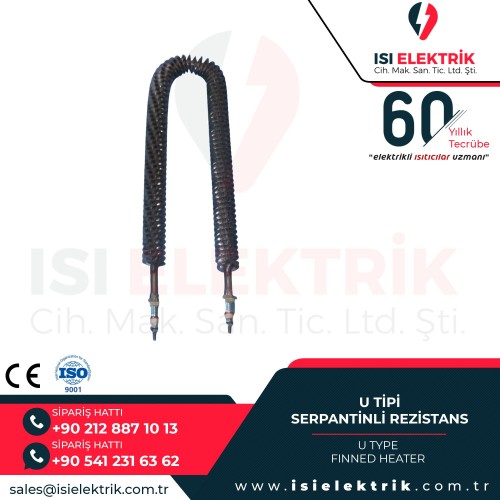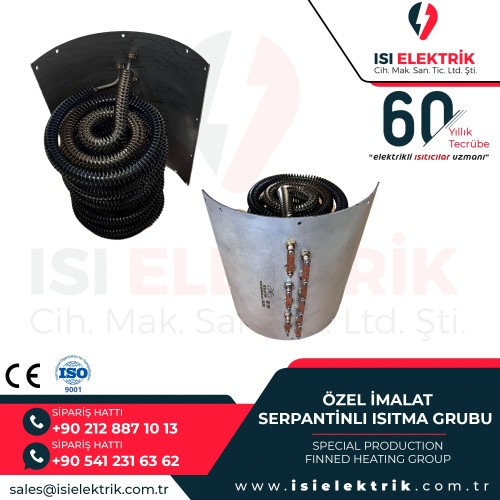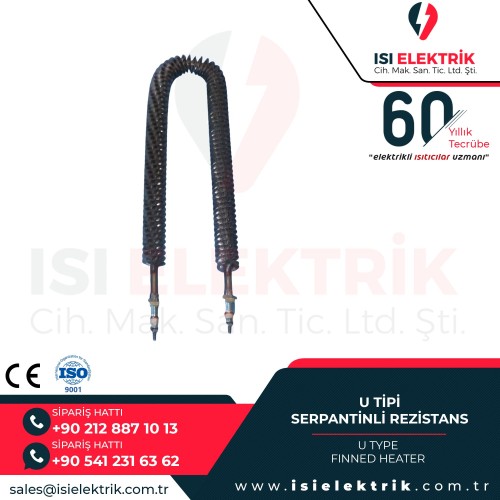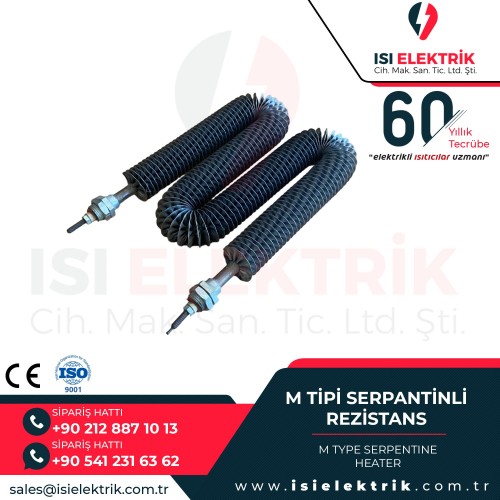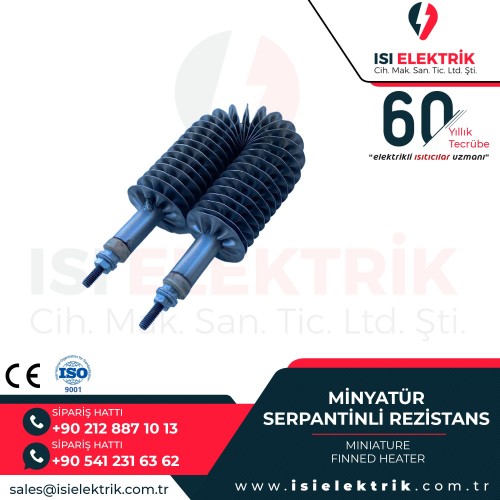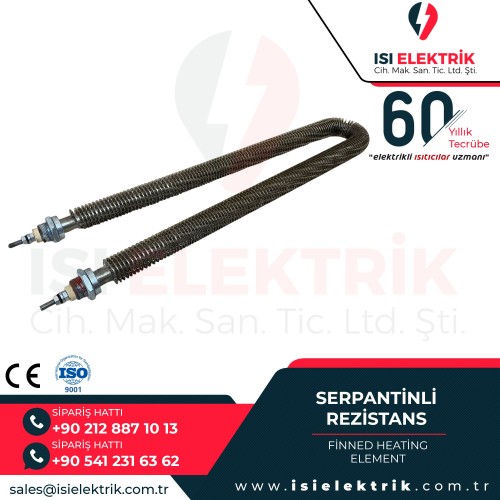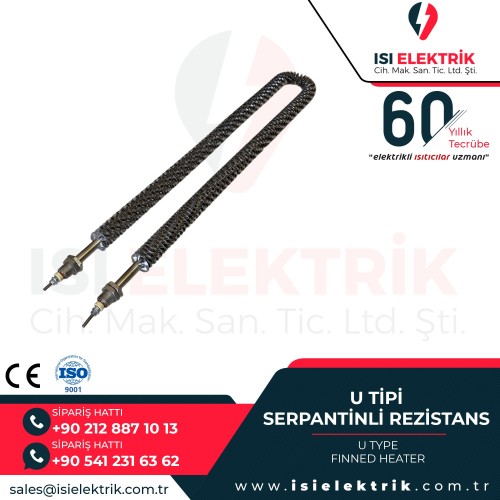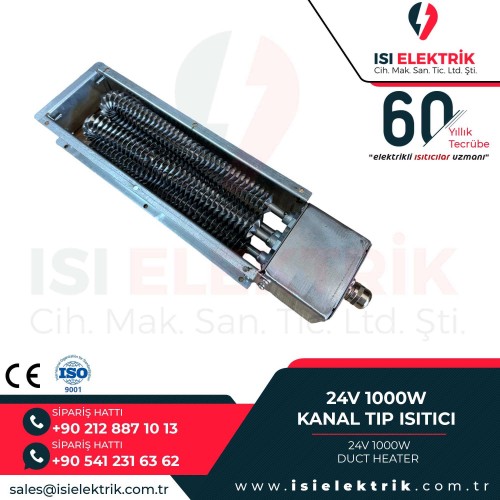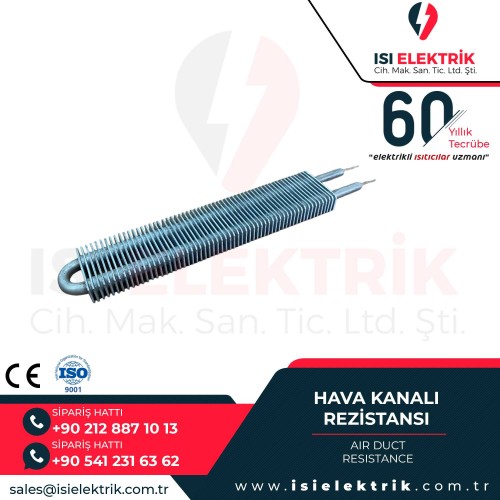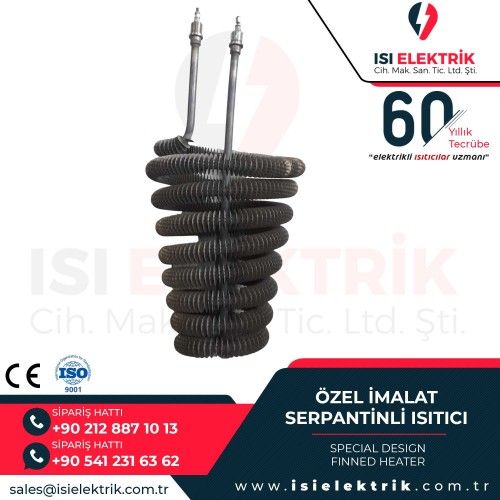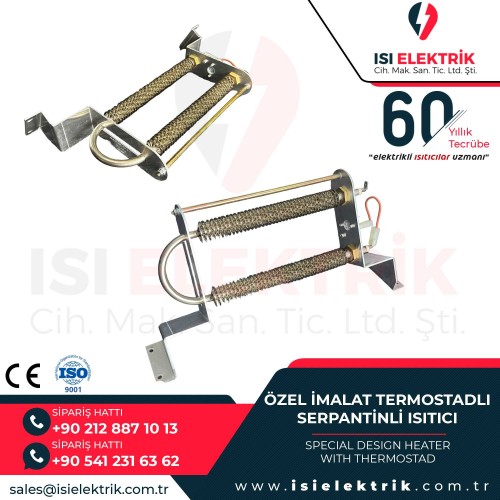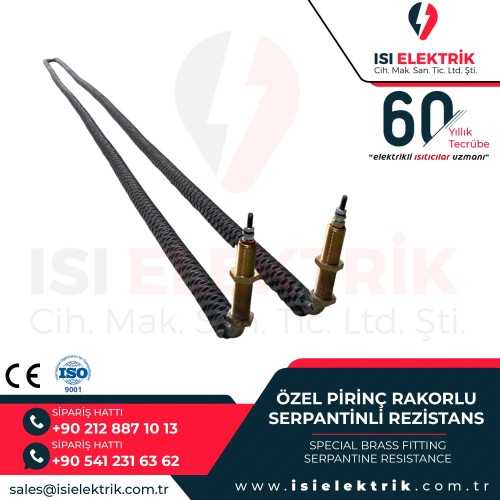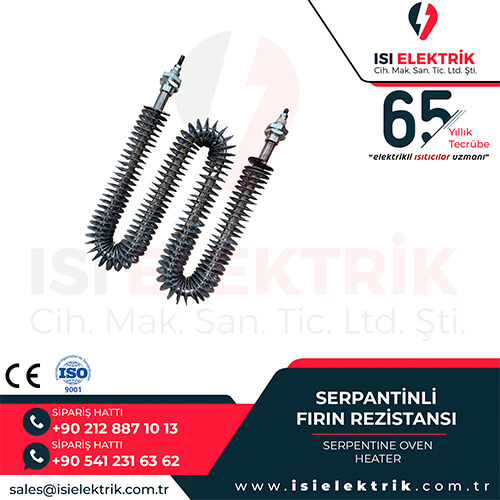Finned Heaters
Finned Heaters are curved and spiral-shaped electrical heating elements. These heaters are made of either one or two different alloys. At the same time, they are heater types with cylindrical spirals made from the required resistance wires. These heaters can provide good heat transfer on the heater surfaces. They can help with heat transfer to Cr-Ni pipes in this capacity. These products can also be installed on the heater's head with a union if necessary.
Finned Heater types provide heat transfer as well as air circulation
where they are used. The assembly process is greatly accelerated and simplified
when a union is added to the heater heads. These products collect the heat
generated by the heater's surface area. The heat is then transferred to the
desired area and area. It has a leaf and wraps design with CR-No and DKP to
accomplish this.
Finned Heaters are available for purchase from our company. We manufacture in the size and features that you require. We can also help you with spare parts and maintenance issues. You can contact us for both personal and industrial needs.
What are the Usage Areas of Serpentine Heater?
Finned Heater is one of the products with numerous fields. These items are most frequently found in industrial furnaces. At the same time, they are used in blowing systems with fans and in the textile industry in fixing machines that provide steam to the yarns. Furthermore, the heater in paint drying ovens is serpentine. In conclusion, finned heaters should be used in all industrial areas where heat and steam are required for high efficiency and low consumption
In addition, it is also used in buildings and shopping malls serving in the construction sector. It can also be used to heat the air that comes out of air ducts in buildings like hospitals and hotels. It is used in all process systems in which drying is performed in the industrial field, depending on the environment. We create a special finned heater to meet your needs and provide you with unique solutions.
Finned Heaters Technical Specifications
• These heaters are produced in different diameters and powers.
• The standard tube diameter of the finned heaters is
between 6.5 and 20 mm in any size you want.
• Serpentine diameter varies between 20
mm and 50 mm depending on the tube
diameter.
• These heaters can
have a supply voltage between 24 V power and 500 V power.
• The coil and tubing material are chosen based on the
location, need, and area where the heater will be used.
• In environments with high-temperature, 310 S and Alloy
800 and Alloy 600 stainless tubes are used.
• If it is to be used in corrosive environments, 316 L
and Alloy 825 materials can be used.
• Finned heaters can reach up to 750 degrees of surface
temperature.
• Finned Heaters can be produced in shapes of U type, M
type, flat, round, and spiral.
• These heaters are generally produced from Cr-Ni tubes or cables. We also manufacture materials such as DKP tubes and copper tubes according to your needs.
How To Select Finned Heaters?
The finned heater you choose depends on the purpose of your use and the area in which you will use it. First, you must determine the product's strength, diameter, and size. At the same time, the ease of installation is considered according to the area you will use.
The device's shape and size should also be carefully chosen. You can
also take advantage of our energy-saving model consulting service. Staggered
mounting should be used in areas where air heating will be accomplished using a
fan. At the same time, U-type finned heaters are subjected to air friction in
these areas. This significantly improves heating performance.
If you intend to purchase a finned heater, please contact our team as soon as possible so that we can provide you with consultation and discovery services. We manufacture finned heaters in a very short period, with varying power, features, materials, and mounting options to meet any requirement.
Finned Heater Prices
Finned Heater prices vary depending on a variety of factors such as product material, power, mounting type, and diameter. These products perform well in any situation where there is a need for immediate heat. Serpentine heaters are significant for their energy efficiency as well as heating performance. If you want to learn more about these products, please contact us right now.
Contact us now to produce heaters with the features you want. At the
same time, get a price offer now. After our discovery service, we produce finned
heaters of all sizes and features according to your needs.
Types of Serpentine Heaters
- Flexible Serpentine Resistors: Designed with a flexible structure to adapt to curved surfaces, especially used for heating complex shapes.
- Coil Serpentine Resistors: Coiled in a spiral shape, typically used in industrial furnaces or ovens.
- High-Temperature Serpentine Resistors: Made from special alloys with high temperature tolerance, used in applications requiring very high temperatures such as glass melting furnaces or metal melting processes.
- Immersion Serpentine Resistors: Submerged in liquids for use, commonly used in water heaters, oil heaters, and chemical processes.
- Stainless Steel Serpentine Resistors: Made from stainless steel and corrosion-resistant, widely used in hygienic environments and the food industry.
Technical Specifications of Serpentine Heaters
- Basic Features:
- Power Range: Various power levels ranging from 500 Watts to 3000 Watts.
- Electrical Voltage: 220 Volts or 240 Volts.
- Temperature Range: Can be used in different temperature ranges from 50°C to 500°C.
- Material Options: Various body materials available such as stainless steel, aluminum, or cast iron.
- Heating Element Material: Heating elements can be made from various materials like nickel-chromium, stainless steel, or Inconel.
- Protection Class: Available in different protection classes like IP20, IP44, or IP65.
- Connection Types: Various connection options such as butterfly nut, cable connection, or plug connection.
- Additional Technical Details:
- Heating Rate: The resistor's ability to heat up quickly.
- Cooling Rate: The resistor's ability to cool down quickly.
- Heat Distribution: How the resistor distributes heat in a homogeneous manner.
- Lifespan: The durability of the resistor over time.
Applications of Serpentine Heaters
- Maritime Industry: Used in water heating systems for marine vessels, heating systems in ship cabins, and other maritime applications.
- Agricultural Industry: Utilized in greenhouse heating systems, hot water tanks, and irrigation systems in the agricultural sector.
- Aviation Industry: Found in aircraft and other air vehicles for cabin heating systems, engine heating systems, and other aviation applications.
- Swimming Pool Industry: Used for heating water in swimming pools to provide a comfortable swimming environment.
- Metallurgical Industry: Employed in metal melting furnaces, foundries, and other metal processing facilities for heating and melting processes.
- Medical Industry: Used for sterilization processes in medical devices, heating processes in laboratory equipment, and other medical applications.
- Energy Production: Utilized for heating in thermal energy production facilities, steam generators, boilers, and other energy production equipment.
Advantages of Serpentine Heaters
- Homogeneous Heat Distribution: Serpentine resistors generally distribute heat in a homogeneous manner, ensuring even temperature distribution in processes or heating areas.
- High Temperature Resistance: Many serpentine resistor materials are resistant to high temperatures, allowing them to be safely used in applications requiring high temperatures.
- Flexible Design Options: Serpentine resistors can be produced in different material types, sizes, and shapes, offering solutions suitable for various application needs.
- Stable Performance: High-quality serpentine resistors provide stable performance over time and do not experience significant decreases in heat production or efficiency over time.
- Safety: When properly designed and used, serpentine resistors can be operated safely, and automatic safety measures come into play in cases of overheating.
- Controllability: Serpentine resistors generally have controllable features, allowing temperature, current, and other parameters to be adjusted to desired levels.
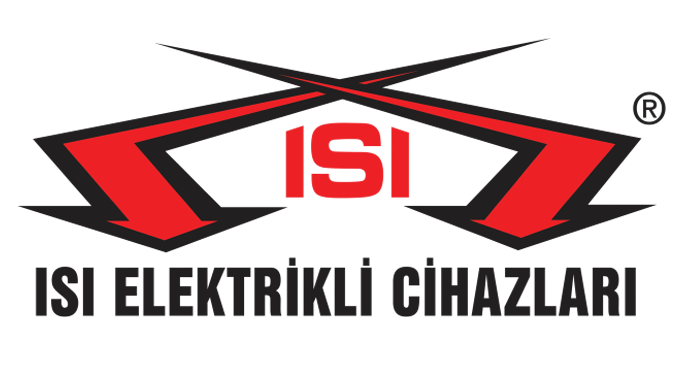
-500x500w.jpg)
-500x500w.jpg)
-500x500w.jpg)
-500x500w.jpg)
-500x500w.jpg)
-500x500w.jpg)
